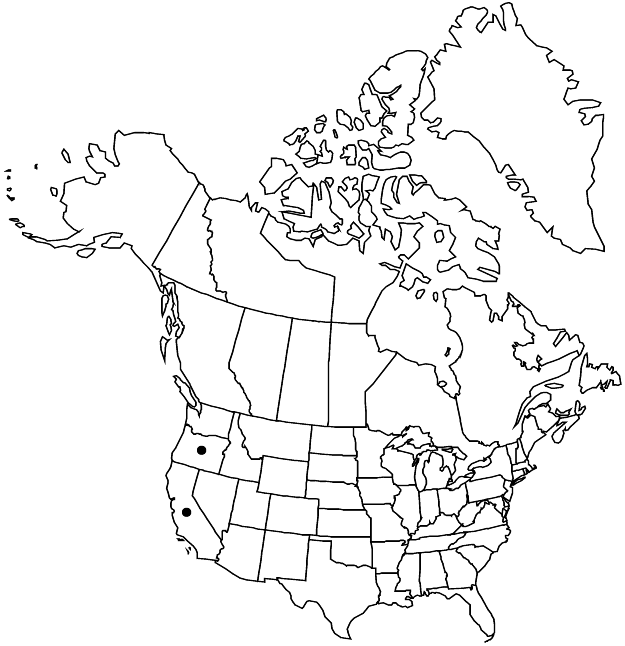Difference between revisions of "Spergularia bocconi"
in P. F. A. Ascherson et al., Syn. Mitteleur. Fl. 5(1): 849. 1919.
FNA>Volume Importer |
FNA>Volume Importer |
Revision as of 20:08, 24 September 2019
Plants annual, ± delicate, 6–25+ cm, often densely stipitate-glandular, at least in inflorescence. Taproots ± filiform. Stems erect to spreading or sprawling, usually much-branched proximally; main stem 0.5–1 mm diam. proximally. Leaves: stipules usually inconspicuous, dull white to tan, broadly triangular, 1.5–4.5 mm, apex acute to short-acuminate; blade ± linear, 1–4.2 cm, at least moderately fleshy, apex apiculate to spine-tipped; axillary leaves absent or 1–2 per cluster. Cymes simple to 6+-compound. Pedicels often oriented to 1 side in fruit. Flowers: sepals connate 0.3–0.6 mm proximally, lobes often 3-veined, ovate to elliptic-oblong, 2.2–3.5 mm, to 4.5 mm in fruit, margins 0.2–0.5 mm wide, apex acute to rounded; petals white or pink to rosy, ovate to obovate, 0.8–1 times as long as sepals; stamens 8–10; styles 0.4–0.6 mm. Capsules greenish, 3(–4) mm, 1–1.2 times as long as sepals. Seeds light brown, with submarginal groove, broadly ovate, plump, 0.4–0.6 mm, somewhat shiny, smooth to minutely roughened, margins with peglike papillae (40×); wing absent. 2n = 18? (Africa), 36 (Europe).
Phenology: Flowering spring.
Habitat: Salt marshes, alkaline places, sandy soils
Elevation: 0-400 m
Distribution

Calif., Oreg., sw Europe (Mediterranean region).
Discussion
The spelling of the epithet bocconi, often “corrected” to bocconii, is debatable. It commemorates Paolo Boccone, suggesting a correction to bocconei, but he also used the Latinized form Bocconus, allowing bocconi. We have used bocconi, following the first usage by Scheele.
Selected References
None.